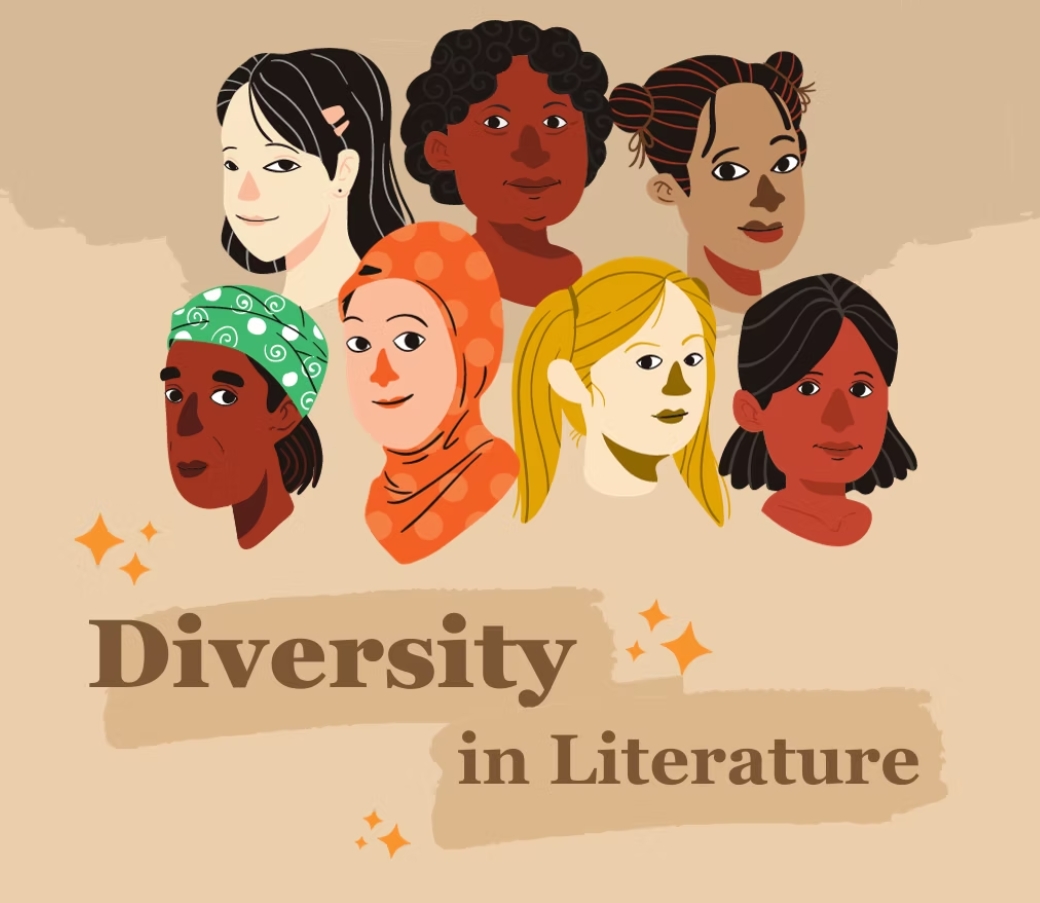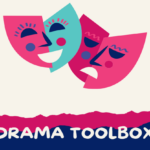As educators, I believe it to be important for us us to dedicate time and effort into understanding the diverse backgrounds, needs, and experiences of our students. Supporting diverse learners and promoting student equity is not just best practice; it is a critical component of creating a truly inclusive and effective educational environment. Every classroom is made up of unique individuals, each bringing their own set of experiences, identities, and perspectives. It is our responsibility to ensure that all students feel valued, supported, and empowered to succeed.
One key way to meet the diverse needs of our students is through differentiated instruction. This approach tailors teaching methods, materials, and assessments to accommodate the varied learning styles, abilities, and interests within a classroom. By doing so, we can offer personalized learning experiences that engage every student in a meaningful way. However, differentiated instruction is just one piece of the puzzle. Another effective strategy for fostering an inclusive classroom is incorporating a wide variety of children’s literature that reflects the diversity of our students. By selecting books that speak to different cultures, backgrounds, and experiences, we ensure that our students feel seen, heard, and understood. This not only helps them develop empathy and respect for others but also fosters a deep sense of belonging within the classroom community.
Incorporating differentiated instruction and culturally responsive teaching practices is essential for promoting equity and supporting diverse learners. Culturally responsive teaching recognizes the importance of students’ cultural backgrounds and integrates materials, resources, and activities that reflect a broad range of cultures, perspectives, and lived experiences. This approach not only honors students’ identities but also enriches the learning experience for all. By incorporating diverse viewpoints and encouraging students to share their own cultural stories and experiences, educators create an environment of mutual respect, empathy, and open dialogue. In such classrooms, students are more likely to feel comfortable expressing themselves and engaging in meaningful conversations that broaden their understanding of the world.
Roxanne Harde, a professor at the University of Alberta, underscores the importance of providing students with access to authentic Indigenous literature in her article Putting First Nations Texts at the Center(2016). Harde highlights the need for texts that portray Indigenous culture in an accurate and respectful manner, stressing the value of books written by Indigenous authors. These works not only offer students a chance to learn about Indigenous cultures but also provide Indigenous children with representation that mirrors their own experiences. In this way, incorporating Indigenous literature into the classroom is not only an opportunity for students to expand their worldview but also a necessary step in supporting and uplifting Indigenous voices and stories. By doing so, we honor their histories and contributions, while fostering an inclusive learning environment where every student can see themselves reflected in the texts they encounter.
Here is just a few of my favorite Indigenous books by Canadian Indigenous authors that I plan to incorporate into the classroom. These works not only celebrate the richness of Indigenous cultures but also provide valuable perspectives and stories that resonate with students of all backgrounds. These pieces of literature connect to many aspects of BC Curriculum through English Language Arts, Science, Social Studies, Soci-Emotional Learning and Art. As I transition from UVIC Teacher Competencies, these teachings align with the British Columbia Teachers Council (BCTC) professional standard number nine.
Educators respect and value the history of First Nations, Inuit, and Metis in Canada and the impact of the past on the present and the future. Educators contribute towards truth, reconciliation and healing. Educators foster a deeper understanding of ways of knowing and being, histories, and cultures of First Nations, Inuit, and Metis.
BC Professional Standards, Number Nine
I Hope – Written by Monique Gray Smith, Illustrated by Gabrielle Grimard
I Hope by Monique Gray Smith is a heartfelt and empowering picture book that focuses on the power of hope and positive intentions. The hopes we hold for the children in our lives are boundless and highlighted throughout the book. As adults we wish for children to flourish and embrace all that life has to offer, yet we also feel a deep sense of protectiveness. Through simple yet profound statements, Monique Gray Smith conveys a heartfelt message of love, care, and the desire for the best for our children, all children.
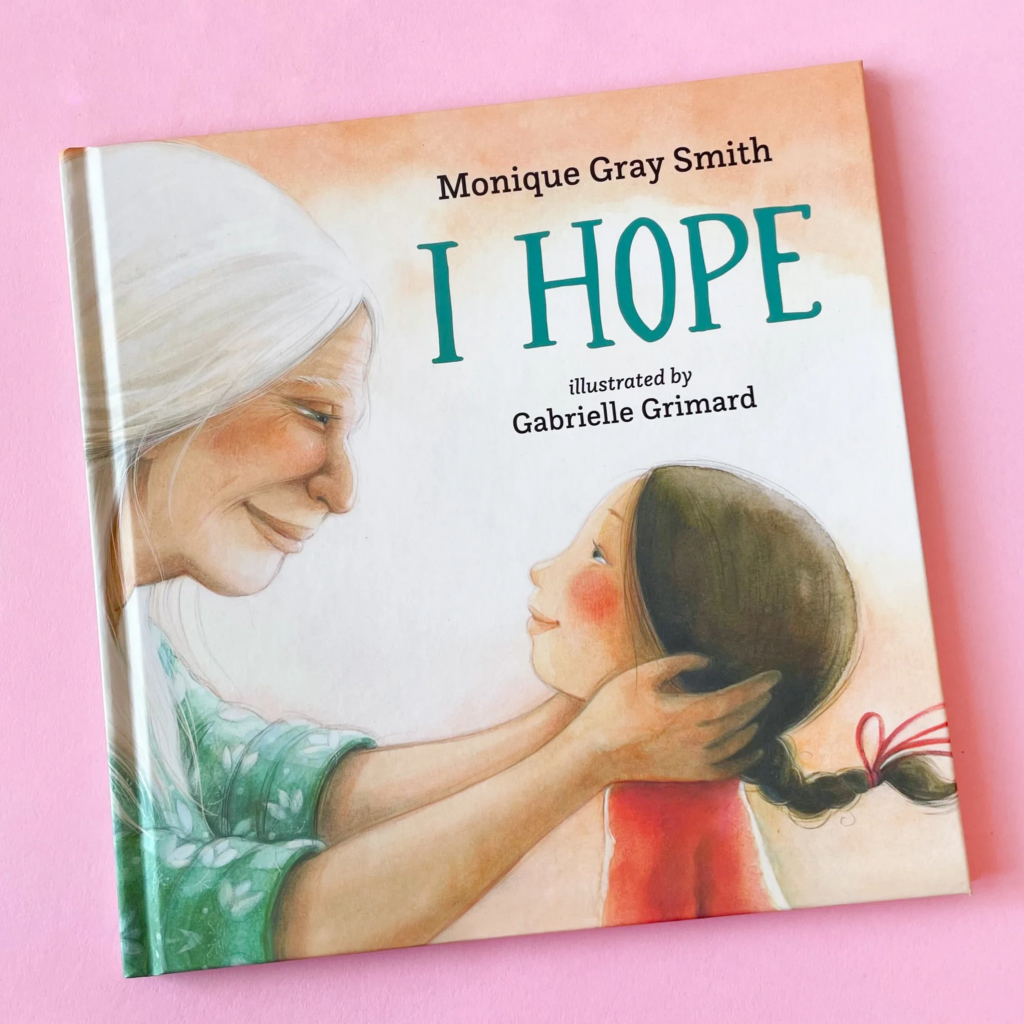
Shi-shi-etko – Written by Nicola I. Campbell, Illustrated by Kim LaFave
Shi-shi-etko is a deeply moving picture book that tells the story of a young girl’s last few days at home before she leaves for one of Canada’s residential schools. The book emphasizes the importance of her connections with her family and Mother Earth, who both play a central role in her life. During this bittersweet time, Shi-shi-etko’s mother, father, and grandmother each offer her meaningful lessons and guidance, ensuring that she carries their love and teachings with her as she faces the unknown.
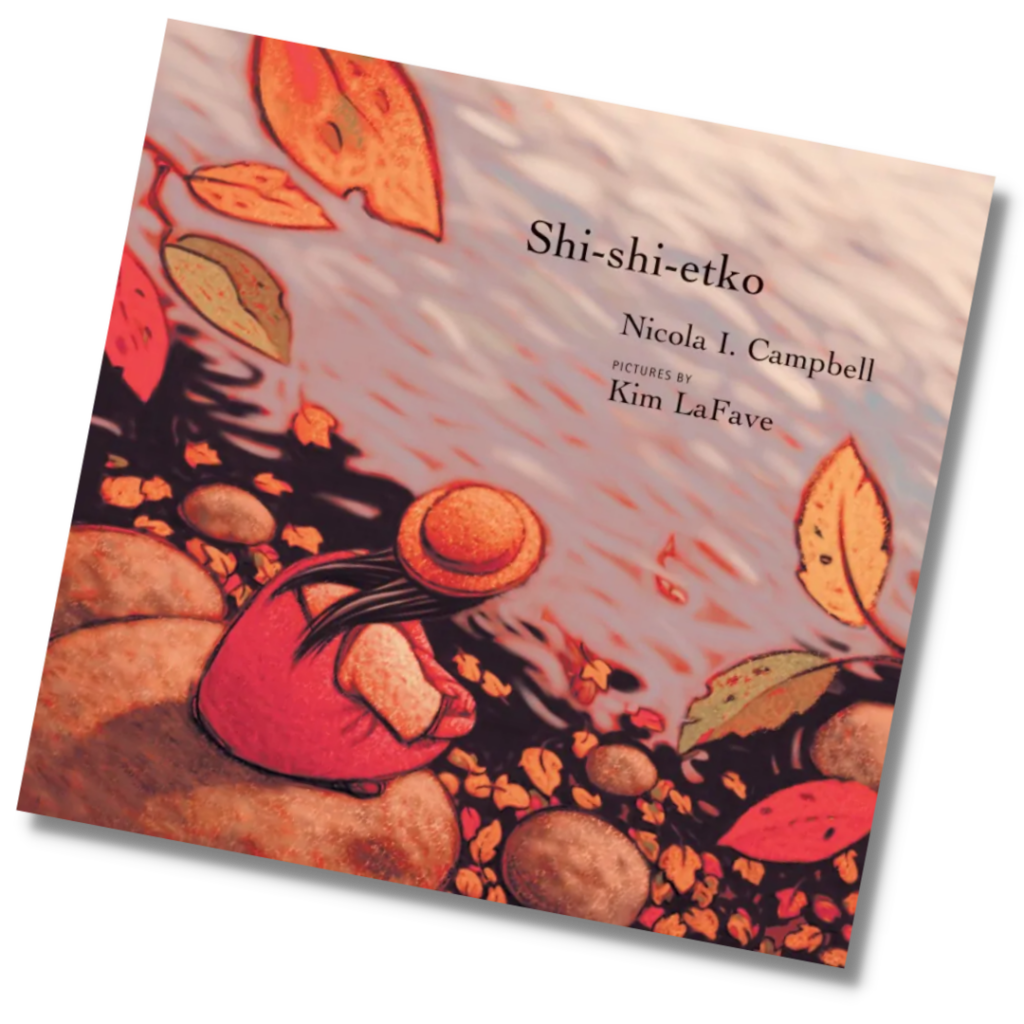
Be a Good Ancestor – Written by Leona Prince and Gabrielle Prince, Illustrated by Carla Jospeh
Be a Good Ancestor is a Canadian picture book that shares Indigenous wisdom on what it means to be a good ancestor. The book touches on themes such as environmental responsibility, animal welfare, self-esteem, self-respect, and the significance of community. It highlights the interconnectedness of all life and encourages readers to reflect on how their actions impact future generations, offering a powerful call to action for everyone to consider their role in shaping the future.

I am Connected – Written by Kung Jaadee, Illustrated by Carla Jospeh
We are all interconnected. Whether through your family, the earth beneath your feet, or the wise guidance of your ancestors, you are a part of the web that connects everything around you. Set against the stunning landscapes of Haida Gwaii, Indigenous storyteller Ḵung Jaadee invites you to explore the many relationships that bind us together across time and space.
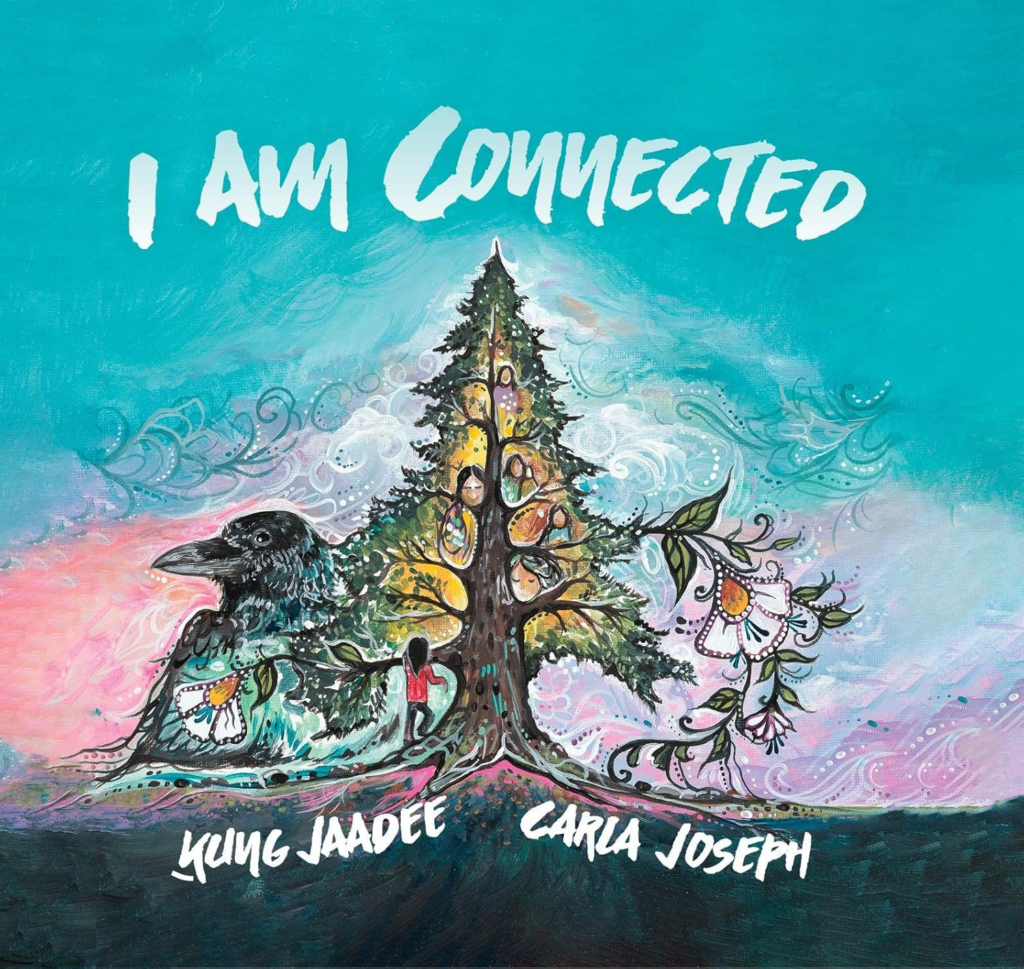
The blog post titled Mirrors, Windows, and Sliding Glass Doors by Dr. Rudine Sims Bishop emphasizes the importance of diverse literature in fostering empathy and understanding. As educators we can think of books as mirrors reflecting our own experiences, windows offering a view into other people’s worlds, and sliding glass doors allowing readers to step into different experiences. If we think of these three concepts in this light we are able to illustrate how literature can help readers of all ages develop a broader worldview, connect with others, and challenge biases. By reading stories that represent diverse perspectives, individuals can build a more inclusive society and engage in important processes of learning and unlearning.
As future teachers, the first teacher competency is to develop an awareness of your worldview and how this relates to others’ worldviews. Creating your own world view along with creating space for your students to create their world view is an important aspect of creating a culturally diverse classroom. Here are a few books that highlight the experiences and stories of people of color, offering readers a glimpse into diverse perspectives. These books not only celebrate the richness of different cultures but also provide an opportunity for students to develop empathy, understanding, and a deeper appreciation for the world around them. By exploring characters from a variety of racial and cultural backgrounds, readers can engage with narratives that broaden their worldview and challenge stereotypes. These pieces of literature connect to many aspects of BC Curriculum through English Language Arts, Science, Social Studies, Soci-Emotional Learning and Art. As I transition from UVIC Teacher Competencies, these teachings align with the British Columbia Teachers Council (BCTC) professional standard number one and six.
BC Professional Standards, Number OneEducators value the success of all students. Educators care for students and act in their best interests.
Educators demonstrate a broad knowledge base and an understanding of areas they teach.
BC Professional Standards, Number Six
I Am Enough – Written by Grace Byers, Illustrated by Keturah A. Bobo
I Am Enough by Grace Byers is a beautifully written and illustrated picture book that encourages self-empowerment, kindness, and embracing one’s individuality. The story celebrates the uniqueness of every person, teaching children that they are enough just as they are. The book explores themes of self-love, confidence, and empathy, while also emphasizing the importance of respecting others and building positive relationships. It’s a heartwarming message for both young readers and adults, reminding us all of our worth and the power of believing in ourselves.

The Proudest Blue – Written by Ibtihaj Muhammad and S.K. Ali, Illustrated by Hatem Aly
The Proudest Blue tells the story of two sisters, one of whom wears a hijab for the first time. The story is told from the perspective of the younger sister as she watches her sister embrace her identity with pride. Throughout the story, the sisters navigate the challenges they face, including the reactions of others, while demonstrating the importance of standing up for what you believe in and remaining true to yourself. The book beautifully explores themes of identity, self-respect, and resilience, especially in the face of adversity.

The Name Jar – Written and Illustrated Yangsook Choi
The Name Jar beautifully tells the story of Unhei, a young girl who struggles with her name after moving from Korea to the United States. On her first day at a new school, Unhei worries that her classmates won’t be able to pronounce her name and that it might make her stand out in an uncomfortable way. To avoid feeling different, she decides to choose an English name by the end of the week. As the story unfolds, Unhei’s classmates become intrigued by her decision and suggest various names, all collected in a jar, but they do not fully understand the significance of her name. Through these interactions, Unhei begins to reflect on the importance of her heritage and the deep connection she has with her name, which holds special meaning in her family and culture. As the story unfold, Unhei embraces her real name, Yoon-Hey, with pride. The story beautifully highlights themes of self-acceptance, the power of names as part of cultural identity, and the journey to belonging. It encourages readers to appreciate their uniqueness and to honor their heritage, while also emphasizing the importance of kindness and respect for others’ differences.

These are just a few books that can help students feel seen, valued, and understood, reminding them that they are not alone in their experiences. By exploring stories that reflect diverse cultures, identities, and backgrounds, these books offer a sense of belonging and connection for students from all backgrounds. Whether through characters who share similar struggles or those who embrace their uniqueness, these stories foster empathy, celebrate individuality, and show that there is strength in diversity. By incorporating such literature into the classroom, educators create a space where all students can recognize themselves in the stories they read, helping them feel supported and affirmed in their own identities.
As a future educator, I intend to incorporate differentiated instruction by providing a range of learning activities that address various learning styles, interests, and abilities. My goal is to create flexible learning environments where students can select tasks that align with their strengths, whether through hands-on experiences, visual aids, or collaborative group projects. I will promote open communication and cultivate a culture of respect, ensuring each student feels valued and confident in sharing their ideas and experiences. By embracing culturally responsive teaching practices, I aim to build a classroom where students’ diverse cultural backgrounds are recognized and celebrated, fostering an atmosphere of inclusion and belonging. By incorporating these ideologies into my teaching practices, I will align with teacher competency number six, which emphasizes respecting all learners from all cultures, including Indigenous learners. This begins with recognizing that diversity encompasses culture, race, ethnicity, religion, ability, sexual orientation, gender identity, disability, socio-economic status, life experience, and language. As I step into my role as an educator, I will celebrate the diversity within my classroom, fostering a unique and inclusive community. In doing so, I will move beyond the UVIC Competencies and work towards meeting and embodying the British Columbia Teacher Council (BCTC) BC Professional Standards for teachers.
Start by recognizing that diversity can include but is not limited to culture, race, ethnicity, religion, ability, sexual orientation, gender identity, disability, socio-economic status, life experience and language. In order to ensure your classroom celebrates its diversity, develops its own sense of community, and is inclusive, there are many things that you incorporate into your practice during field experiences.BC Professional Standards, Number Five

Resources
BC Teachers’ Council. (2019). Professional Standards for BC Educators Effective. https://www2.gov.bc.ca/assets/gov/education/kindergarten-to-grade-12/teach/teacher-regulation/standards-for-educators/edu_standards.pdf
Bishop, Rudine. (n.d.). Mirrors, Windows, and Sliding Glass Doors. Rise up against Racism. https://ruar.org/blog/mirrors-windows-and-sliding-glass-doors-rudine-sims-bishop
Dziekan, P. (2017). Teacher Education Program Competency Guide. UVIC Teacher Education. ://onlineacademiccommunity.uvic.ca/teachered/competencies-12/
Government of British Columbia. (2019). Building Student Success – BC’s New Curriculum. Gov.bc.ca. https://curriculum.gov.bc.ca/
Harde, Roxanne. (2016). Putting First Nations Texts at the Center. Bookbird: A Journal of International Children’s Literature. 54. 4-9. 10.1353/bkb.2016.0019.
